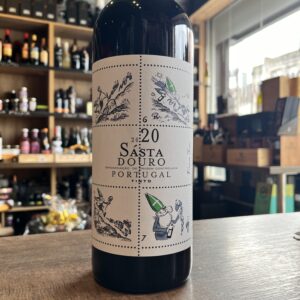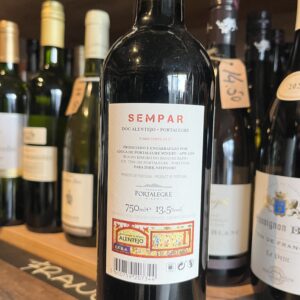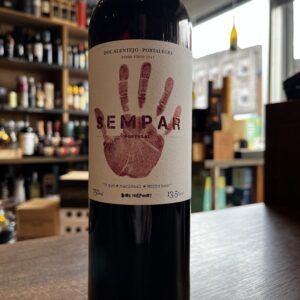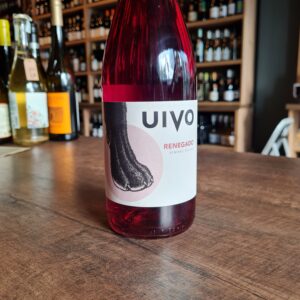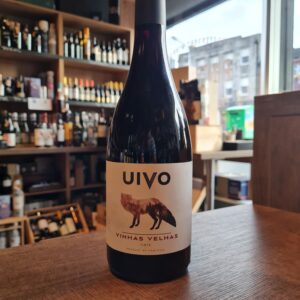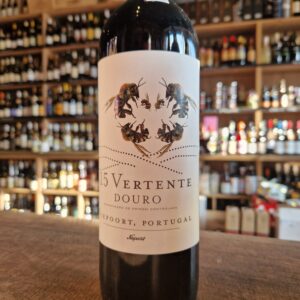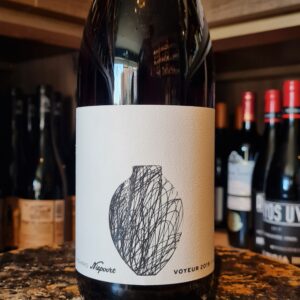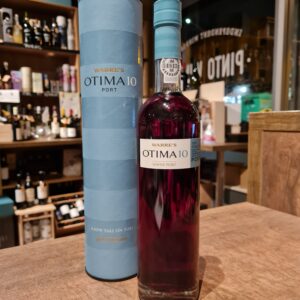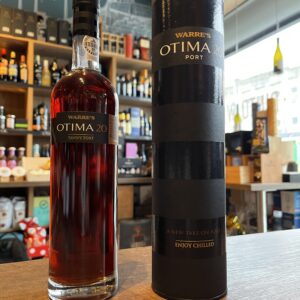-
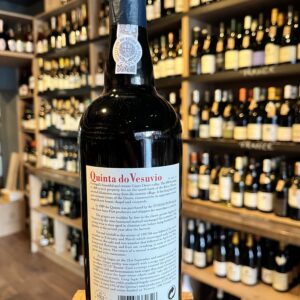
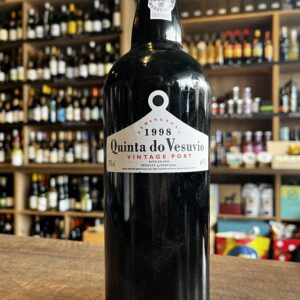 A Vintage Port is only declared in years of exceptional quality. Quinta do Vesuvio is arguably the most magnificent estate in the Douro valley. Located in the beautiful and austere Port-growing region of the Upper Douro valley, its history dates back to the 16th Century. “The quinta of all quintas – one of the wonders of the world”. At Vesuvio, the work of man and the work of nature achieve a perfect and enduring harmony. More than anywhere else in the Douro it has a haunting and enchanting beauty; when you leave it, you take with you a sense of the place that does not fade with time.
A Vintage Port is only declared in years of exceptional quality. Quinta do Vesuvio is arguably the most magnificent estate in the Douro valley. Located in the beautiful and austere Port-growing region of the Upper Douro valley, its history dates back to the 16th Century. “The quinta of all quintas – one of the wonders of the world”. At Vesuvio, the work of man and the work of nature achieve a perfect and enduring harmony. More than anywhere else in the Douro it has a haunting and enchanting beauty; when you leave it, you take with you a sense of the place that does not fade with time. -
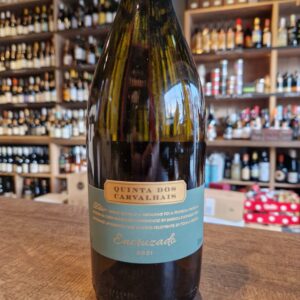 Sogrape Vinhos was founded in 1942 by Fernando van Zeller Guedes, with the ambition of making Portuguese wines known to the world and a long-term vision based on the quality of the wines to be marketed, the importance of the novelty of the brands, and the presentation of its wines. Today, led by the third generation of the founding family, Sogrape Vinhos is increasingly faithful to the goal it has had since it was founded: to be a family-owned company with an international vocation, focused on the production of quality wines, on innovation, and the development of global Portuguese brands. Sogrape Vinhos has about 830 hectares of vineyards in Portugal. Quinta dos Carvalhais is located in the municipality of Mangualde, near Nelas and Alcafache. The soil, the climate, the experience of those who have always produced wine make the Dão truly special. This 105-hectare estate, situated at an altitude of 465-500 metres, has 50 hectares under vine on predominantly granite soils. Warm days and cool nights at this altitude slow down the grape ripening process and result in wines with lovely depth yet vibrant fruit and a signature freshness. Precision viticulture is carried out on the estate with a multitude of different plots matched to specific grape varieties and harvested at different times. The fruit for the 2021 Encruzado was sourced from four different plots. Two cooler plots, one next to the lake on the estate and another often shaded by the oak trees, deliver a vibrant acidity the blend. Another plot with more sandy soils produces intensely aromatic grapes. All of the vineyards are farmed sustainably and harvesting is carried out by hand.
Sogrape Vinhos was founded in 1942 by Fernando van Zeller Guedes, with the ambition of making Portuguese wines known to the world and a long-term vision based on the quality of the wines to be marketed, the importance of the novelty of the brands, and the presentation of its wines. Today, led by the third generation of the founding family, Sogrape Vinhos is increasingly faithful to the goal it has had since it was founded: to be a family-owned company with an international vocation, focused on the production of quality wines, on innovation, and the development of global Portuguese brands. Sogrape Vinhos has about 830 hectares of vineyards in Portugal. Quinta dos Carvalhais is located in the municipality of Mangualde, near Nelas and Alcafache. The soil, the climate, the experience of those who have always produced wine make the Dão truly special. This 105-hectare estate, situated at an altitude of 465-500 metres, has 50 hectares under vine on predominantly granite soils. Warm days and cool nights at this altitude slow down the grape ripening process and result in wines with lovely depth yet vibrant fruit and a signature freshness. Precision viticulture is carried out on the estate with a multitude of different plots matched to specific grape varieties and harvested at different times. The fruit for the 2021 Encruzado was sourced from four different plots. Two cooler plots, one next to the lake on the estate and another often shaded by the oak trees, deliver a vibrant acidity the blend. Another plot with more sandy soils produces intensely aromatic grapes. All of the vineyards are farmed sustainably and harvesting is carried out by hand. -
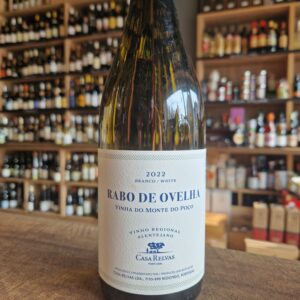 Casa Relvas is a family project, started in 1997 in São Miguel de Machede, in Redondo, by Alexandre Relvas, which aims to continue the history of five generations with a strong passion for the Alentejo and its genuine nature. Over the years, the family has grown along with the business and it didn't take long for it to total about 750 hectares of Montado forest, 225 hectares of olive groves, and 350 hectares of 100% integrated production vineyards. With the three estates - Herdade de São Miguel, Herdade da Pimenta and Herdade de São Miguel de Machede - Casa Relvas has the capacity to produce 6 million bottles of wine annually, 70% of which is to meet the needs of the foreign market, being present in over 30 countries worldwide, offering the best of the Alentejo.
Casa Relvas is a family project, started in 1997 in São Miguel de Machede, in Redondo, by Alexandre Relvas, which aims to continue the history of five generations with a strong passion for the Alentejo and its genuine nature. Over the years, the family has grown along with the business and it didn't take long for it to total about 750 hectares of Montado forest, 225 hectares of olive groves, and 350 hectares of 100% integrated production vineyards. With the three estates - Herdade de São Miguel, Herdade da Pimenta and Herdade de São Miguel de Machede - Casa Relvas has the capacity to produce 6 million bottles of wine annually, 70% of which is to meet the needs of the foreign market, being present in over 30 countries worldwide, offering the best of the Alentejo. -
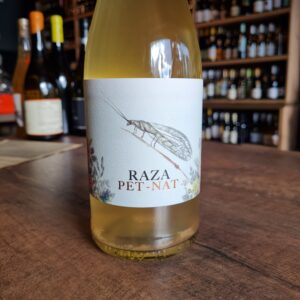 The concept of this label is to send the consumer to the botanical universe of the XVI century. A very unique style which is a tribute to nature and the living beings who look after it so well. A mixture of charcoal pencils with watercolor provides fresh, traditional, and natural air. The informative label on the side of the bottle is drawn in a vintage style referencing this era's aesthetics. The Lacewing or Chrysoperla (Raza)represents their holistic approach to viticulture. Its efficiency in biological control pest is remarkable and helps keep the vines free of pests.Pet Nat is an abbreviation for Pétillant Naturel, a naturally sparkling wine. The fermented wine is still bottled in the bottle, which stops the fermentation there, so a little CO2 and yeast precipitate is formed in the bottle. The wine is not cleaned, sweetened (no dosage) and the wine is now closed with a regular crown cap. The wine is made with natural yeast and uses minimal sulphites. Spontaneous fermentation ends in the bottle, as a result of which a pleasantly natural layer remains in the wine. This refreshing, sparkling wine is full of fruity and lively orchard flavors. The natural sediment makes the wine cloudy, while adding many interesting nuances to the taste, the wild yeast makes the wine tasty and easy to enjoy.
The concept of this label is to send the consumer to the botanical universe of the XVI century. A very unique style which is a tribute to nature and the living beings who look after it so well. A mixture of charcoal pencils with watercolor provides fresh, traditional, and natural air. The informative label on the side of the bottle is drawn in a vintage style referencing this era's aesthetics. The Lacewing or Chrysoperla (Raza)represents their holistic approach to viticulture. Its efficiency in biological control pest is remarkable and helps keep the vines free of pests.Pet Nat is an abbreviation for Pétillant Naturel, a naturally sparkling wine. The fermented wine is still bottled in the bottle, which stops the fermentation there, so a little CO2 and yeast precipitate is formed in the bottle. The wine is not cleaned, sweetened (no dosage) and the wine is now closed with a regular crown cap. The wine is made with natural yeast and uses minimal sulphites. Spontaneous fermentation ends in the bottle, as a result of which a pleasantly natural layer remains in the wine. This refreshing, sparkling wine is full of fruity and lively orchard flavors. The natural sediment makes the wine cloudy, while adding many interesting nuances to the taste, the wild yeast makes the wine tasty and easy to enjoy. -
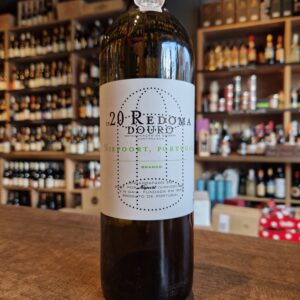 This oaky white will appeal to Graves or Burgundy lovers. The grapes used for the Redoma Branco originate from old vines growing on the right bank of the Douro River, at an altitude of between 400 and 600 metres. These vines predominantly grow in mica-schist soils, which, in combination with the complexity of the various grape varieties typical of the Douro region, create delicate wines full of freshness and minerality. Food suggestions-Oysters, oven-baked fish, poultry and other white meats. Vegetarian options: dishes based on root vegetables (turnips, sweet potato, beetroot), Caesar salad, cheese.
This oaky white will appeal to Graves or Burgundy lovers. The grapes used for the Redoma Branco originate from old vines growing on the right bank of the Douro River, at an altitude of between 400 and 600 metres. These vines predominantly grow in mica-schist soils, which, in combination with the complexity of the various grape varieties typical of the Douro region, create delicate wines full of freshness and minerality. Food suggestions-Oysters, oven-baked fish, poultry and other white meats. Vegetarian options: dishes based on root vegetables (turnips, sweet potato, beetroot), Caesar salad, cheese. -
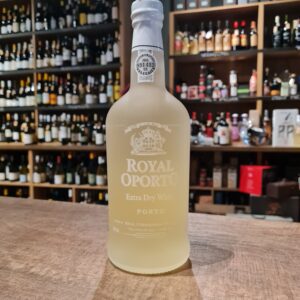 The Port is by difinition, generous and full-bodied wine, produced in the region Douro- the demarcated region of the world's oldest wines. Made from grapes traditionally used in the region, its wine making process is characterized by adding brandy to the wine in full fermentation. This type of port that inspires moments and new forms of consumption, which we recommend be served as Port Tonic. Classic serving would be as a chilled aperitif, but also you could be adventurous and make a ''Caipi Royal'' or just serve it on the rocks with an orange slice.
The Port is by difinition, generous and full-bodied wine, produced in the region Douro- the demarcated region of the world's oldest wines. Made from grapes traditionally used in the region, its wine making process is characterized by adding brandy to the wine in full fermentation. This type of port that inspires moments and new forms of consumption, which we recommend be served as Port Tonic. Classic serving would be as a chilled aperitif, but also you could be adventurous and make a ''Caipi Royal'' or just serve it on the rocks with an orange slice. -
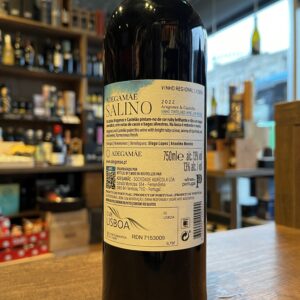
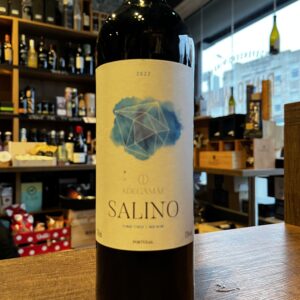 Salino is from north from Lisbon (Torres Vedras) and just a step away from the ocean, AdegaMãe brings out the best of a terroir strongly influenced by the prevailing sea breezes, standing out for its Atlantic-inspired wines, brimming with character, freshness and minerality. The winery was built by the Alves family, founder of Riberalves Group, AdegaMãe is born as a tribute from the men to the family’s matriarch, Manuela Alves. On this particular project, 2 star winemakers were asked to do an everydays wine that brings quality and immediate expression to the palate. Pair it with Charcuterie of all sorts, red meats and stews
Salino is from north from Lisbon (Torres Vedras) and just a step away from the ocean, AdegaMãe brings out the best of a terroir strongly influenced by the prevailing sea breezes, standing out for its Atlantic-inspired wines, brimming with character, freshness and minerality. The winery was built by the Alves family, founder of Riberalves Group, AdegaMãe is born as a tribute from the men to the family’s matriarch, Manuela Alves. On this particular project, 2 star winemakers were asked to do an everydays wine that brings quality and immediate expression to the palate. Pair it with Charcuterie of all sorts, red meats and stews -
Out of stock
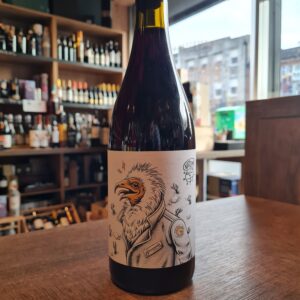 Ricardo Alves and Frederico Machado visited Bemposta for the first time together in 2017. They were on the Portuguese back roads in the Parque Natural das Arribas do Douro, with its wealth of ancient, indigenous and largely forgotten grapevines chaotically perched on the extreme slopes on the Douro river gorge, when they came upon the perfect location for their life project, the place to which they would commit their youth. They set out to rediscover and revitalize an ancient wine culture whose local home winegrowers have just barely kept the faint bloodline of their vinous history from extinction. Trás-os-Montes is a large, but not too well known, wine region of north eastern Portugal (Translation: behind the Mountains), is where the Arribas Wine Company are based and both are very passionate have been making some very interesting wines. Saroto Tinto is made from a small, old parcel of vines comprised of old-fashioned red and white Douro varieties. The resultant wine is full of wild forest fruit, lots of berries with a kick of natural sourness. Plenty of fresh acidity adds juiciness and balances the rustic, grippy tannins, making for quite a light red. Earthy minerality adds extra complexity and the finish is long and moreish. Its bottled unfined and unfiltered so may have natural sediment in the bottle.
Ricardo Alves and Frederico Machado visited Bemposta for the first time together in 2017. They were on the Portuguese back roads in the Parque Natural das Arribas do Douro, with its wealth of ancient, indigenous and largely forgotten grapevines chaotically perched on the extreme slopes on the Douro river gorge, when they came upon the perfect location for their life project, the place to which they would commit their youth. They set out to rediscover and revitalize an ancient wine culture whose local home winegrowers have just barely kept the faint bloodline of their vinous history from extinction. Trás-os-Montes is a large, but not too well known, wine region of north eastern Portugal (Translation: behind the Mountains), is where the Arribas Wine Company are based and both are very passionate have been making some very interesting wines. Saroto Tinto is made from a small, old parcel of vines comprised of old-fashioned red and white Douro varieties. The resultant wine is full of wild forest fruit, lots of berries with a kick of natural sourness. Plenty of fresh acidity adds juiciness and balances the rustic, grippy tannins, making for quite a light red. Earthy minerality adds extra complexity and the finish is long and moreish. Its bottled unfined and unfiltered so may have natural sediment in the bottle. -
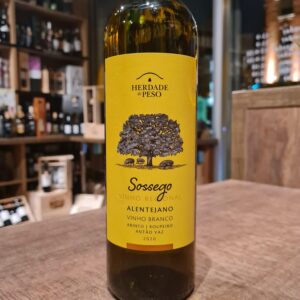 Sogrape Vinhos has been investing in the classic winegrowing regions of Portugal since it was set up in 1942. With a strong presence in the regions of Dão, Douro and (MInho) Vinhos Verdes, their entrance into the Alentejo — the winegrowing region with the highest growth rate in the country — was a natural step. Herdade do Peso Sossego Branco offers the authenticity and immediate passion of Alentejo flavors in a refreshing and aromatic wine. Herdade do Peso is the brand that revitalizes the deepest essence of the region, brought to the surface by the science and know-how of Sogrape Vinhos. The result is the production of exuberant and attractive wines, whose flavors, aromas and colors remind us of life at its best, just like the region where they are born. Sossego White is a refreshing wine that is full of flavour, perfect when served on its own or as na aperitif. It is an excellent accompaniment to various fish dishes, white meats and a variety of salads.
Sogrape Vinhos has been investing in the classic winegrowing regions of Portugal since it was set up in 1942. With a strong presence in the regions of Dão, Douro and (MInho) Vinhos Verdes, their entrance into the Alentejo — the winegrowing region with the highest growth rate in the country — was a natural step. Herdade do Peso Sossego Branco offers the authenticity and immediate passion of Alentejo flavors in a refreshing and aromatic wine. Herdade do Peso is the brand that revitalizes the deepest essence of the region, brought to the surface by the science and know-how of Sogrape Vinhos. The result is the production of exuberant and attractive wines, whose flavors, aromas and colors remind us of life at its best, just like the region where they are born. Sossego White is a refreshing wine that is full of flavour, perfect when served on its own or as na aperitif. It is an excellent accompaniment to various fish dishes, white meats and a variety of salads. -
Out of stock
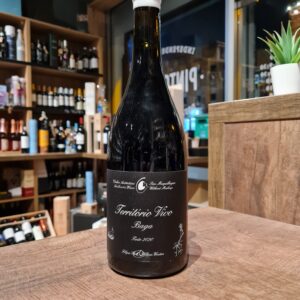 This ''Território Vivo'' is a delicate Baga, it reflects the true term ''living Terroir''. The heritage of old vineyards of the emblematic Baga grape is a richness to be relished. Some of the vines are 80 years old. The subsoils are chalky clay and the vineyards are South East oriented on fairly steep slopes. This particular vintage has fantastic story that could've gone South and thus an unforgettable harvest. They had an attack of rabbits on all of their old vines of Baga. They ate all of the grapes up to 30cm high of the ground. Inedvertently this produced high quality juice but left Filipa and William with the tiniest crops. Producing wine close to nature without pesticides and herbicides can be quite a challenge, certanly when the territory is quite alive!! Serve it with elegant glasses at the temperature of 16-18c and it is highly recommended to pair it with refined foods( not too spicy), Fillet of beef, veal, pigeon, duck and creamy cheeses.
This ''Território Vivo'' is a delicate Baga, it reflects the true term ''living Terroir''. The heritage of old vineyards of the emblematic Baga grape is a richness to be relished. Some of the vines are 80 years old. The subsoils are chalky clay and the vineyards are South East oriented on fairly steep slopes. This particular vintage has fantastic story that could've gone South and thus an unforgettable harvest. They had an attack of rabbits on all of their old vines of Baga. They ate all of the grapes up to 30cm high of the ground. Inedvertently this produced high quality juice but left Filipa and William with the tiniest crops. Producing wine close to nature without pesticides and herbicides can be quite a challenge, certanly when the territory is quite alive!! Serve it with elegant glasses at the temperature of 16-18c and it is highly recommended to pair it with refined foods( not too spicy), Fillet of beef, veal, pigeon, duck and creamy cheeses. -
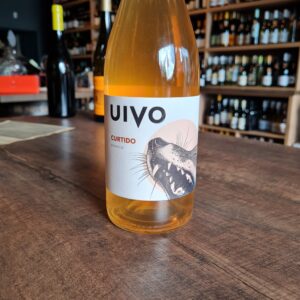 Uivo, a howl back to Nature! Naturally farmed Moscatel Galego, Branco Wine grapes with minimal intervention in the cellar, 4 months of skin contact in cement tanks. Folias de Baco was started in 2007 by young, innovative winemaker, Tiago Sampaio, who was inspired by his grandfather’s vineyard work. He has a vivacious curiosity and loves to experiment at every step of the winemaking/growing processes. He has studied agricultural engineering and has a PhD in Viticulture and Enology from Oregon State University, where he picked up on modern philosophies and aesthetics of winemaking, never forgetting his Douro roots. Folias de Baco is in the Alto Douro, in the sub-region of Cima-Corgo where the land is very tough and challenging at a higher altitude, but it is an expression of traditional melding with modern techniques. The ‘Uivo Curtido’ is comprised of 100% moscatel galego from 35+ year old vines in soils spattered with schist and granite. It is unfined and unfiltered. As tasty as it looks. Organically grown, low-intervention/natural wine, vegan. Have fun with it
Uivo, a howl back to Nature! Naturally farmed Moscatel Galego, Branco Wine grapes with minimal intervention in the cellar, 4 months of skin contact in cement tanks. Folias de Baco was started in 2007 by young, innovative winemaker, Tiago Sampaio, who was inspired by his grandfather’s vineyard work. He has a vivacious curiosity and loves to experiment at every step of the winemaking/growing processes. He has studied agricultural engineering and has a PhD in Viticulture and Enology from Oregon State University, where he picked up on modern philosophies and aesthetics of winemaking, never forgetting his Douro roots. Folias de Baco is in the Alto Douro, in the sub-region of Cima-Corgo where the land is very tough and challenging at a higher altitude, but it is an expression of traditional melding with modern techniques. The ‘Uivo Curtido’ is comprised of 100% moscatel galego from 35+ year old vines in soils spattered with schist and granite. It is unfined and unfiltered. As tasty as it looks. Organically grown, low-intervention/natural wine, vegan. Have fun with it -
 In 2003, José Ribeiro Vieira purchased a four hectare vineyard in the foothills of Serra de Aire of Cortes, in the Alta Estremadura, near Lisbon. Vale da Mata pays tribute to Vieira’s winemaker father, Manuel, who claimed that Vale de Mata was the site where he succeeded in producing his best wines. The Vale de Mata project respects the expression of its terroir, cultivating the vines sustainably and using minimal intervention in the winery. Manuel gave this wine its name and his granddaughter Catarina Viera has followed in his footsteps, continuing his winemaking legacy. In 2018. Vale da Mata is the name of a small, old vineyard located in the foothills of Serra de Aire, in Cortes. The vineyard has a maritime climate and is influenced by the Atlantic Ocean. The parcel is just a few hectares and is situated on a steep terrain with rocky soil. The land is extremely hard to work and is cultivated manually, with winter pruning and green harvesting taking place by hand. Protected to the north, it has good sunlight exposure throughout the day and is surrounded by olive trees, fig trees, walnuts and shrubs. Vale de Mata is associated with several sustainable programmes; they are a member of the FSC and grow all their grapes according to organic philosophies. The vines are trained according to the Cordon Royat method and the grapes are manually harvested at optimum maturity.
In 2003, José Ribeiro Vieira purchased a four hectare vineyard in the foothills of Serra de Aire of Cortes, in the Alta Estremadura, near Lisbon. Vale da Mata pays tribute to Vieira’s winemaker father, Manuel, who claimed that Vale de Mata was the site where he succeeded in producing his best wines. The Vale de Mata project respects the expression of its terroir, cultivating the vines sustainably and using minimal intervention in the winery. Manuel gave this wine its name and his granddaughter Catarina Viera has followed in his footsteps, continuing his winemaking legacy. In 2018. Vale da Mata is the name of a small, old vineyard located in the foothills of Serra de Aire, in Cortes. The vineyard has a maritime climate and is influenced by the Atlantic Ocean. The parcel is just a few hectares and is situated on a steep terrain with rocky soil. The land is extremely hard to work and is cultivated manually, with winter pruning and green harvesting taking place by hand. Protected to the north, it has good sunlight exposure throughout the day and is surrounded by olive trees, fig trees, walnuts and shrubs. Vale de Mata is associated with several sustainable programmes; they are a member of the FSC and grow all their grapes according to organic philosophies. The vines are trained according to the Cordon Royat method and the grapes are manually harvested at optimum maturity. -
Out of stock
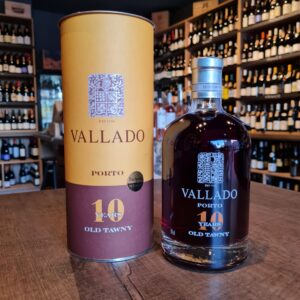 Quinta do Vallado, established in 1716, is one of the oldest and most famous Quintas in the Douro Valley. It once belonged to the legendary Dona Antonia Adelaide Ferreira, and still belongs to her descendents. Produces both still and port wines. This eighteenth-century Douro wine estate is actually one of the most modern-looking in Portugal. Although the team uses the traditional panoply of indigenous grapes, its methods are bang up to date and the results are nothing short of sensational. Tawny ports are wines usually made from red grapes that are aged in wooden barrels exposing them to gradual oxidation and evaporation. As a result of this oxidation, they mellow to a golden-brown color. The exposure to oxygen imparts "nutty" flavours to the wine, which is blended to match the house style. This port is really best enjoyed with a good strong cheese board. Think mature hard cheeses and salty blues. Rich and flavoursome to match with the intense flavours of the port.
Quinta do Vallado, established in 1716, is one of the oldest and most famous Quintas in the Douro Valley. It once belonged to the legendary Dona Antonia Adelaide Ferreira, and still belongs to her descendents. Produces both still and port wines. This eighteenth-century Douro wine estate is actually one of the most modern-looking in Portugal. Although the team uses the traditional panoply of indigenous grapes, its methods are bang up to date and the results are nothing short of sensational. Tawny ports are wines usually made from red grapes that are aged in wooden barrels exposing them to gradual oxidation and evaporation. As a result of this oxidation, they mellow to a golden-brown color. The exposure to oxygen imparts "nutty" flavours to the wine, which is blended to match the house style. This port is really best enjoyed with a good strong cheese board. Think mature hard cheeses and salty blues. Rich and flavoursome to match with the intense flavours of the port. -
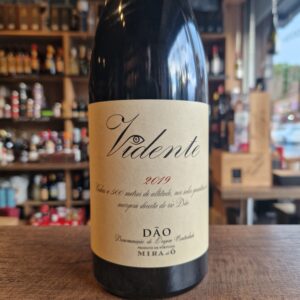 This wine rises from 500 meters above sea level in the granite soils of the right bank of the Dão. These low yield vines are about 30 years old and produce high quality grapes of the varieties Jaen, Alfrocheiro, Tinta Pinheira, Tinta Roriz and Touriga Nacional. This wine is a very personal vision over the Dão and its wines, enhancing the elegance and freshness that are natural to this region. True value in wine. Food orientated but aren't all the wines?
This wine rises from 500 meters above sea level in the granite soils of the right bank of the Dão. These low yield vines are about 30 years old and produce high quality grapes of the varieties Jaen, Alfrocheiro, Tinta Pinheira, Tinta Roriz and Touriga Nacional. This wine is a very personal vision over the Dão and its wines, enhancing the elegance and freshness that are natural to this region. True value in wine. Food orientated but aren't all the wines? -
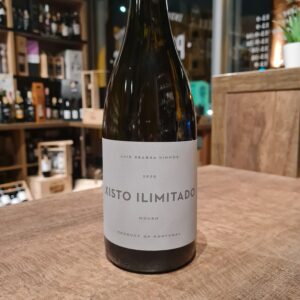 Another under the radar Portuguese White. This drop is now considered one of the new best contemporanean whites in Portugal. Produced by Luis Seabra, who worked for more than 10 years as an oenologist for Dirk Niepoort and finally started to follow his own path in 2012. The name he gives to his wines is indicative of his vision of wine: Xisto (Schist). He makes very pure wines that reflect their terroir. Luis Seabra sets a new standard in the Douro with his pure wines. Xisto Ilimitado, is a Portuguese analogue of the idea of a "village-level" Burgundy. A blend of six varieties planted in three sub-areas of the Douro, Ilimitado is a glimpse of the appellation's schist soil. Luis Seabra, has concentrated his production on the different soil types of the valley. Bright, concentrated and fresh, Xisto Ilimitado is an excellent introduction to the new Douro. Vineyards located in Cima Corgo. The vines are between 30 and 45 years old, planted in micaceous schist at an altitude of 500 to 600 m, and are a sub-region that experiences extreme highs and lows in terms of temperature, with one of the largest day-night temperature deltas in Portugal. As such, the fruit experiences an extended resting period. Annual rainfall of 400 mm typical of the region. Goes wonderfully with roasted poultry, white fish and seafood, and especially with the spiciest preparations
Another under the radar Portuguese White. This drop is now considered one of the new best contemporanean whites in Portugal. Produced by Luis Seabra, who worked for more than 10 years as an oenologist for Dirk Niepoort and finally started to follow his own path in 2012. The name he gives to his wines is indicative of his vision of wine: Xisto (Schist). He makes very pure wines that reflect their terroir. Luis Seabra sets a new standard in the Douro with his pure wines. Xisto Ilimitado, is a Portuguese analogue of the idea of a "village-level" Burgundy. A blend of six varieties planted in three sub-areas of the Douro, Ilimitado is a glimpse of the appellation's schist soil. Luis Seabra, has concentrated his production on the different soil types of the valley. Bright, concentrated and fresh, Xisto Ilimitado is an excellent introduction to the new Douro. Vineyards located in Cima Corgo. The vines are between 30 and 45 years old, planted in micaceous schist at an altitude of 500 to 600 m, and are a sub-region that experiences extreme highs and lows in terms of temperature, with one of the largest day-night temperature deltas in Portugal. As such, the fruit experiences an extended resting period. Annual rainfall of 400 mm typical of the region. Goes wonderfully with roasted poultry, white fish and seafood, and especially with the spiciest preparations


